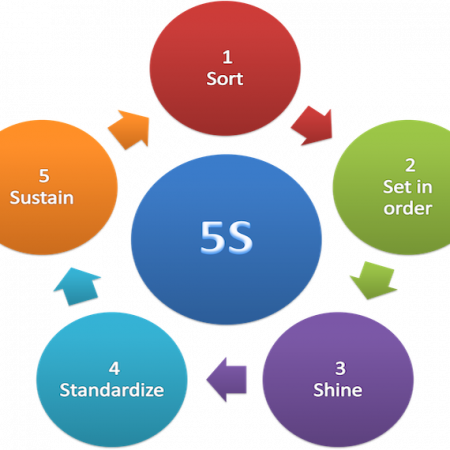What makes Japanese work culture so unique ? – 8 unique practices that you should know

To work in Japanese companies is cultural experiences. Throughout my career, I worked at both Japanese companies and non-Japanese companies and I have seen the Japanese work culture from both inside and outside. There are definitely uniqueness in Japanese workplace culture. If you are considering to work for a Japanese company, you might be wondering what you are getting into.
There are positive and negative sides as in everything. Positive sides might actually turn into negative sides when they go too extreme. Of course each company has its own work culture where some practices might not apply. These practices are also less observed at Japanese subsidiaries or affiliates overseas.
8 unique practices of Japanese workplace culture
I would like to share 8 typical characteristics/ practices of Japanese workplace culture.
- Diligence
This is the most typical characteristic of Japanese working culture that you might come up when you think about Japanese work style. Another word to use for diligence is hard working. Typically the Japanese are known to work for long hours. The problem of this characteristic is that they expect the same to the others. When the boss is working late, junior staff often feel obliged to work late.
Under the new work style initiative, this tradition of working for long hours might change, especially in the middle of covid-19 to encourage remote work. Instead of working for long hours, it is hoped that diligence will remain but in more effective way.
- Pay close attention to details
This is the essence of Japanese culture. This is the basis of Japanese quality. Product inspection process is very strict. This can be also counter productive. I remember when Japanese auditors visited the Japanese subsidiary in Indonesia, they checked its petty cash and they found Rp1000 short which is 7 yen and they started asking for questions. Then suddenly Indonesian staff reached to her wallet and put Rp1000 to the petty cash box. This staff certainly did not want to spend time to search for Rp1000.
- Hierarchy

Japanese work culture put emphasis on hierarchy between a senior and a junior. This practice was used to be known as “nenko-joretsu”. For many years, Japanese companies maintained a seniority-based wage and promotion system. This meant that the employees receive pay increases and promotions based on their years of service rather than on merits. However, Japanese companies have been seeing a gradual change from the seniority system to the more merit-based system.
Even nenko-joretsu is getting less, but this hierarchy still plays a very important part in Japanese work culture as it stays in terms of seniority in ranks.
Employees of higher rank are often addressed with their title. Seating arrangement are based on hierarchy. A person of higher status speaks in casual speech while the person of lower status uses respectful speech which is “keigo”.
- Group harmony/Team-oriented

Group harmony is called “wa” which is to prioritise the needs of society rather than personal interests. Instead of making decisions based on individual authority, Japanese companies tend to achieve group consensus in order to maintain cooperation within the organisation which avoid direct conflicts.
The team work in Japanese companies are somehow different from what you see in Western culture. The assignments of tasks are to the team while the employees’ work scopes are wider as they are more multi skilled than specialised and then they work together by sharing the responsibilities to achieve the target under the supervision of senior staff. So the results are not acceptable not by individuals but by the team.
- Chain of Communication: Ho-Ren-So
Ho-Ren-So is the business term of an acronym composed of three words, namely, Hokoku (reporting), Renraku (informing) and Sodan (consulting). Ho-Ren-So is a Japanese word for “spinach”. It is used as a basic business rule to facilitate smooth business communication in Japanese companies in order to share information. Especially this reporting is the vital practice in Japanese companies.
- Detailed Information gathering and sharing
Japan is known as high context society, which means they do not express explicitly and use indirect communication style, which often we express “ need to read between lines.”. Due to relatively homogeneous cultural and educational background of Japanese society, they communicate based on the shared understanding and context and this drives to the culture of information sharing.
People from low context society, which is more task-oriented culture tend to limit their focus to “need to know” information to complete their tasks while people from high context society tend to gather and share more broader information. They share the information in more detailed and which might not be needed for reaching the conclusion, but this practice will help to create more harmonious working environment.
I remember when I was providing consulting services to the Japanese companies to gather information before they set up a subsidiary in Indonesia, my client was to fill in the form of pros and cons of 6 scenarios of different shareholding ratios for its joint venture company in very details and also the legal basis behind it. When I told him that this was the latest government practice and the regulation was not issued, he got so agitated and asked to write to get the confirmation from the government which was not possible if not it takes really long time to get a reply. The point of his request was that the legal basis is reacquired to go through “Ringi”.
- Ringi System
Japanese decision-making process is known as a lengthy process which is called “Ringi” system. It is a collective, holistic, harmonious decision-making process. It is a written proposal to be circulated among all the people who will be affected by the decision in different departments based on hierarchy. Each individuals read “Ringi” proposal and they make some suggestions and sign it off. By the time “RIngi” document has made the rounds and received everyone’s seals, all the people signed off the “Ringi” are in agreement on the decision. By the time decision was made, the responsibility is spared out among many individuals. Then the agreed proposal will be discussed among the board of directors’ meeting for the final approval. This is the reason that it takes long time to reach the decision in Japanese companies. This process also requires many detailed information and careful planning to receive the support of different divisions which have different views.
This full “Ringi” system might not be used unless it is for important decisions. Even when the full “Ringi” system is not used, decision making in Japanese companies often follow a similar process for getting approval from many divisions.
This practice does make the Japanese companies decision-making process take long, but the positive side of this process is that implementation after “Ringi” tend to be smooth and fast.
- Nemawashi
For supporting “Ringi” system, there is another Japanese practice called “Nemawashi”. It literally means “ Root-binding”. “Nemawashi” is a process for informal consensus building to solidify the support. This will facilitate Ringi system to work by spending time to discuss face to face in the informal meetings before and during Ringi process.
With new generation of Japanese workforce as well as new initiative of workplace reform taken place in Japan, the above typical practices of Japanese workplace culture have been in fact changing gradually, but knowing these unique practices of Japanese work culture will place you in a better position when you work with or for them.
















No comments yet.